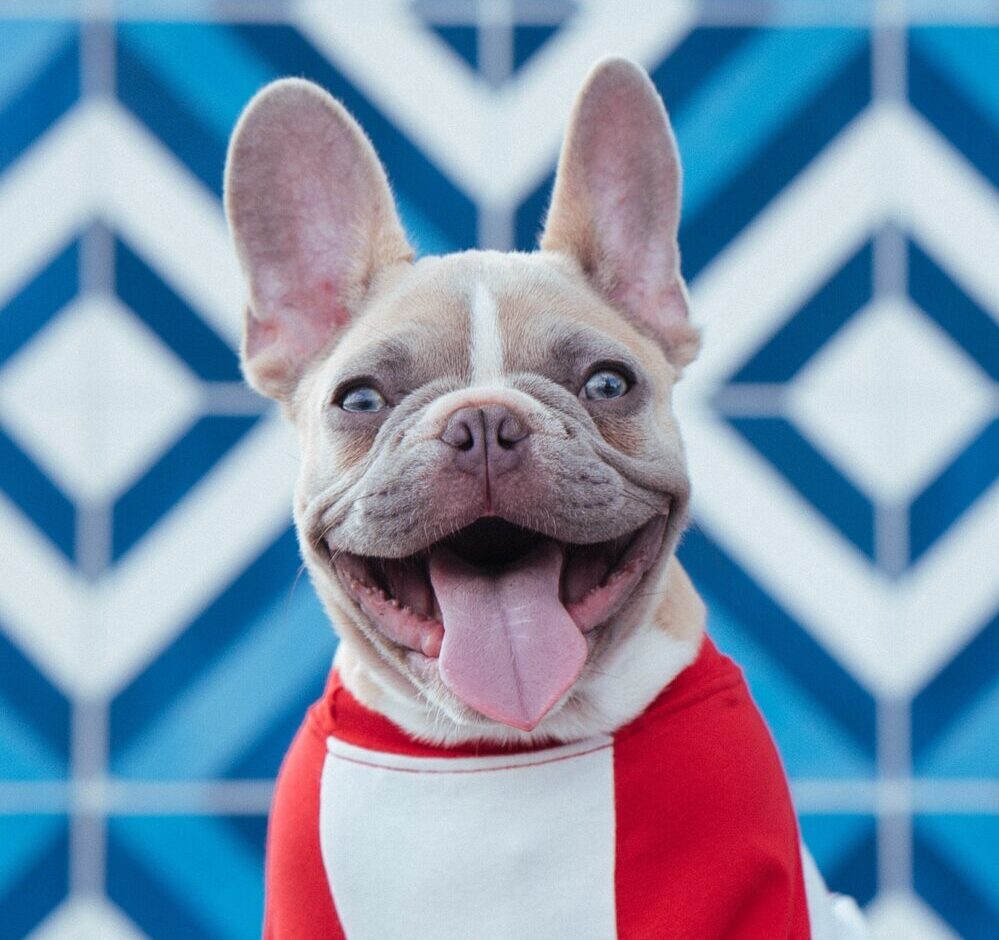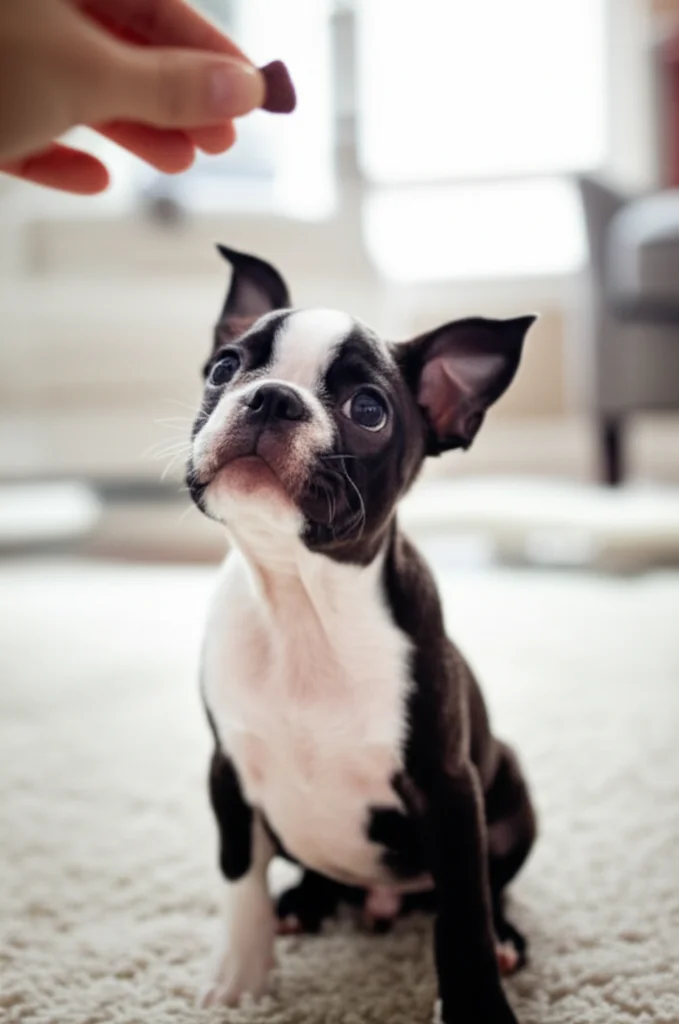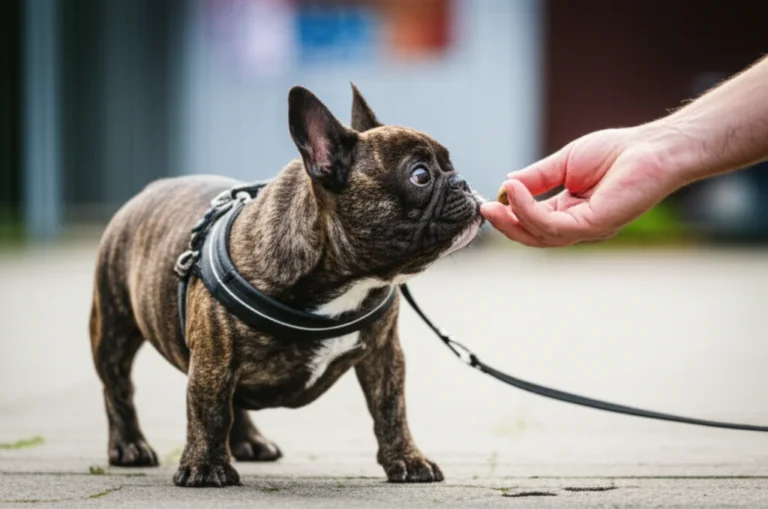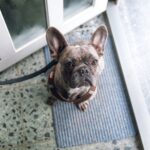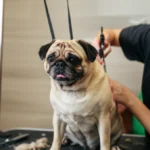Support our educational content for free when you purchase through links on our site. Learn more
Snort Nose Dog Training: 7 Expert Tips to Sniff Success in 2025 🐾
If you’ve ever been charmed (or hilariously interrupted) by your snort nose dog’s adorable snuffles during training, you’re not alone! At Snubby Puppy™, we’ve spent years decoding the unique quirks of brachycephalic breeds like Bulldogs, Pugs, and Boxers. These lovable snub-nosed companions come with special challenges—and incredible sniffing superpowers.
Did you know that despite their shortened noses, snort nose dogs have an olfactory sense just as sharp as any other breed? The trick is tailoring training to their breathing limitations while tapping into their natural scenting talents. In this comprehensive guide, we reveal 7 essential training techniques, the best tools and toys, breed-specific tips, and inspiring success stories that will have your snort nose pup mastering nose work in no time. Plus, we’ll share expert advice on avoiding common pitfalls and creating a training schedule that respects your dog’s unique needs.
Curious how to keep your snort nose dog engaged without overwhelming them? Or which products truly enhance their scent training experience? Keep reading — the answers (and some surprising insights) are just a few scrolls away!
Key Takeaways
- Snort nose dogs excel at nose work training, which leverages their powerful scenting abilities while accommodating their respiratory quirks.
- Short, positive, and scent-focused sessions are the secret to keeping these breeds motivated and healthy.
- Using specialized tools like the NACSW Starter Kit and snuffle mats can make training fun and effective.
- Breed-specific strategies help tailor training for Bulldogs, Pugs, and Boxers, addressing their unique personalities and challenges.
- Avoid common mistakes such as overexertion and harsh corrections; instead, focus on positive reinforcement and hydration.
- Real-life success stories prove that with the right approach, snort nose dogs can become confident, happy scent detectives.
Ready to transform your training routine and bond deeper with your snort nose pup? Let’s dive in!
Table of Contents
- ⚡️ Quick Tips and Facts About Snort Nose Dog Training
- 🐶 The Origins and Science Behind Snort Nose Dog Training
- 🔍 Understanding Snort Nose Behavior: What It Means and Why It Matters
- 🎯 7 Essential Snort Nose Dog Training Techniques That Work Wonders
- 1. Positive Reinforcement Strategies for Snort Nose Dogs
- 2. Nose Work Games to Boost Your Dog’s Sniffing Skills
- 3. Managing Snorting During Training Sessions
- 4. Using Scent Detection Tools and Kits
- 5. Socialization Tips for Snort Nose Breeds
- 6. Handling Common Snort Nose Dog Training Challenges
- 7. Advanced Snort Nose Training: From Basics to Expert Level
- 🛠️ Best Products and Tools for Snort Nose Dog Training
- 🐾 Breed-Specific Tips: Training Snort Nose Dogs Like Bulldogs, Pugs, and Boxers
- 💡 Expert Advice: Common Mistakes to Avoid in Snort Nose Dog Training
- 📅 Creating a Training Schedule Tailored for Snort Nose Dogs
- 🏆 Success Stories: How Snort Nose Training Transformed These Dogs
- 📚 Recommended Reading and Resources for Snort Nose Dog Enthusiasts
- 🧩 Integrating Snort Nose Training with Other Canine Activities
- 🔄 Troubleshooting and FAQs: Your Snort Nose Dog Training Questions Answered
- 📌 Conclusion: Mastering Snort Nose Dog Training with Confidence
- 🔗 Recommended Links for Further Exploration
- ❓ Frequently Asked Questions (FAQ) About Snort Nose Dog Training
- 📖 Reference Links and Scientific Studies on Snort Nose Dog Training
⚡️ Quick Tips and Facts About Snort Nose Dog Training
Welcome to the wonderfully quirky world of snort nose dog training! At Snubby Puppy™, we specialize in the lovable, snub-nosed breeds—think Bulldogs, Pugs, Boxers, and Boston Terriers (check out our Boston Terrier behavior analysis for more breed-specific insights). These dogs come with unique facial structures that influence their breathing, behavior, and training needs. Here’s a quick rundown of must-know facts before we dive deeper:
- ✅ Snort nose dogs have brachycephalic skulls, which means their short noses can cause breathing quirks like snorting, snuffling, and wheezing. This affects training sessions, especially physical exercises.
- ✅ Nose work training is ideal for these breeds because it taps into their natural scenting abilities without stressing their respiratory systems.
- ✅ Positive reinforcement and patience are key—snort nose dogs can be stubborn but are incredibly motivated by treats and praise.
- ✅ Short, frequent training sessions work better than long, intense ones to avoid overheating or respiratory distress.
- ✅ Mental stimulation through scent games can reduce anxiety and destructive behaviors common in brachycephalic breeds.
- ✅ Hydration and cool environments are essential during training to keep your snort nose pup comfortable.
Did you know? According to the American Kennel Club, brachycephalic breeds are prone to respiratory issues, so training that respects their limits is not just smart—it’s essential.
Ready to sniff out more? Let’s explore the fascinating science behind these adorable snort noses!
🐶 The Origins and Science Behind Snort Nose Dog Training
Snort nose dog training isn’t just about managing those charming snuffles—it’s rooted in science and history. Here’s what we’ve learned from years of hands-on experience and research:
The Brachycephalic Blueprint
Snub-nosed dogs have a shortened skull shape called brachycephaly, which compresses their nasal passages. This anatomical quirk leads to:
- Narrowed nostrils (stenotic nares)
- Elongated soft palate
- Hypoplastic trachea
These factors cause the trademark snorting and can make heavy exercise risky. But here’s the kicker: their noses are still amazingly sensitive! Their olfactory receptors are just as sharp as any other dog’s, making scent-based training a perfect fit.
From Detection Dogs to Nose Work for All
The modern concept of nose work training stems from professional detection dogs—think bomb-sniffing or search-and-rescue canines. In 2006, trainers developed K9 Nose Work® to bring scent training to everyday dogs, including our snort nose friends (NACSW).
The goal? To provide mental stimulation, physical activity, and confidence-building without overtaxing the dog’s breathing.
Why Snort Nose Dogs Excel at Nose Work
Despite their breathing challenges, these breeds thrive in scent games because:
- They can self-regulate intensity by sniffing at their own pace.
- Nose work is low-impact, avoiding the risks of high-intensity exercise.
- It taps into their natural instincts, making training feel like play.
Our Snubby Puppy™ team has seen shy Bulldogs blossom into confident scent detectives after just a few weeks of nose work training!
🔍 Understanding Snort Nose Behavior: What It Means and Why It Matters
Snorting, snuffling, and wheezing aren’t just cute quirks—they’re communication and coping mechanisms. Understanding these behaviors helps tailor training for success.
What Does Snorting Signal?
- Excitement or anticipation: Your dog might snort when they’re eager to start a game or training session.
- Respiratory effort: Sometimes snorting means your dog is working harder to breathe, especially in warm or stressful conditions.
- Attention-seeking: Some snort nose dogs learn that snorting gets your attention, so they use it as a social tool.
How Snort Nose Dogs Experience Training Differently
- They may fatigue faster during physical tasks.
- They can be more sensitive to heat and humidity.
- Their sense of smell is a superpower, but distractions like loud noises or crowds can overwhelm them.
Behavioral Tips from Snubby Puppy™
- Watch for signs of respiratory distress (excessive panting, blue gums).
- Use calm, consistent cues to avoid over-exciting your dog.
- Incorporate rest breaks and water to keep your pup comfortable.
Want to see how this plays out in real life? Our next section breaks down the top training techniques that work wonders for snort nose dogs.
🎯 7 Essential Snort Nose Dog Training Techniques That Work Wonders
Training snort nose dogs is an art and a science. Here are our top 7 techniques, backed by experience and expert insights:
1. Positive Reinforcement Strategies for Snort Nose Dogs
Why it works: These dogs respond best to rewards rather than corrections. Positive reinforcement builds trust and motivation.
How to do it:
- Use high-value treats like small pieces of cooked chicken or cheese.
- Pair treats with verbal praise and gentle petting.
- Avoid harsh corrections; instead, redirect unwanted behavior.
Tip: Use a clicker or a consistent marker word like “Yes!” to signal correct behavior.
2. Nose Work Games to Boost Your Dog’s Sniffing Skills
Inspired by K9 Nose Work®, these games are perfect for snort nose breeds.
Step-by-step beginner game:
- Gather 6 cardboard boxes; bait 3 with treats.
- Arrange boxes in a room, leaving them open.
- Remove your dog from the area, hide treats, then bring them back to search.
- Reward your dog when they find the treat.
Progression: Close boxes slightly, hide treats higher up, or nest boxes inside each other.
3. Managing Snorting During Training Sessions
Snorting can be distracting but is manageable.
- Keep sessions short (10-15 minutes max).
- Train in cool, well-ventilated areas.
- Use calm, slow commands to reduce excitement.
- Monitor breathing; pause if snorting escalates.
4. Using Scent Detection Tools and Kits
We love these tools for enhancing training:
| Product Name | Design (1-10) | Functionality (1-10) | Ease of Use (1-10) | Durability (1-10) |
|---|---|---|---|---|
| NACSW Starter Kit | 9 | 10 | 8 | 9 |
| Snuffle Mat by Outward Hound | 8 | 9 | 10 | 8 |
| Scent Detection Training Boxes by Clean Run | 9 | 9 | 7 | 9 |
Our favorites: The NACSW Starter Kit is perfect for beginners wanting to dive into formal scent work, while snuffle mats are great for casual home play.
5. Socialization Tips for Snort Nose Breeds
Socialization is crucial but requires care:
- Introduce new dogs and people gradually.
- Avoid crowded or noisy places that may stress your dog.
- Use controlled leash walks and positive reinforcement.
- Pair socialization with nose work to build confidence.
6. Handling Common Snort Nose Dog Training Challenges
- Stubbornness: Use shorter sessions with frequent rewards.
- Distractions: Train in low-stimulus environments first.
- Overheating: Train indoors or during cooler times of day.
7. Advanced Snort Nose Training: From Basics to Expert Level
Once your dog masters basics, try:
- Teaching alert behaviors (sit or bark) when they find a scent.
- Increasing search complexity with outdoor environments.
- Participating in NACSW trials or local nose work competitions.
🛠️ Best Products and Tools for Snort Nose Dog Training
Let’s talk gear! Here’s a detailed rating table for top products tailored to snort nose dog training:
| Product Name | Design | Functionality | Comfort for Snort Nose Dogs | Durability | Overall Score |
|---|---|---|---|---|---|
| NACSW Starter Kit | 9 | 10 | 9 | 9 | 9.3 |
| Outward Hound Snuffle Mat | 8 | 9 | 10 | 8 | 8.8 |
| KONG Classic Toy | 9 | 8 | 9 | 10 | 9.0 |
| PetSafe Treat Pouch | 8 | 9 | 10 | 8 | 8.8 |
NACSW Starter Kit
- Features: Includes scent samples (birch, anise, clove), training guides, and scent containers.
- Benefits: Perfect for structured training, especially if you want to compete.
- Drawbacks: Requires commitment to learn scent work protocols.
Outward Hound Snuffle Mat
- Features: Soft fabric mat with pockets to hide treats.
- Benefits: Great for indoor mental stimulation, easy on snort nose dogs’ breathing.
- Drawbacks: Limited scent complexity compared to formal kits.
KONG Classic Toy
- Features: Durable rubber toy that can be stuffed with treats.
- Benefits: Encourages independent play and mental engagement.
- Drawbacks: Not scent-specific but great for reward delivery.
PetSafe Treat Pouch
- Features: Convenient pouch for carrying treats during training.
- Benefits: Keeps treats handy, encourages quick reinforcement.
- Drawbacks: Some models may be bulky for small handlers.
👉 CHECK PRICE on:
- NACSW Starter Kit on Amazon | NACSW Official Website
- Outward Hound Snuffle Mat on Chewy | Outward Hound Official
- KONG Classic Toy on Amazon | KONG Official
- PetSafe Treat Pouch on Chewy | PetSafe Official
🐾 Breed-Specific Tips: Training Snort Nose Dogs Like Bulldogs, Pugs, and Boxers
Each snort nose breed has its own personality and quirks. Here’s how to tailor training:
Bulldogs
- Training style: Slow and steady wins the race. Bulldogs can be stubborn but love food rewards.
- Tip: Use short sessions with lots of breaks to avoid overheating.
- Fun fact: Bulldogs often snort when excited—embrace it as part of their charm!
Pugs
- Training style: Highly social and playful, but can get distracted easily.
- Tip: Use interactive nose games to keep their attention.
- Challenge: Pugs may overheat quickly; avoid midday training outdoors.
Boxers
- Training style: Energetic and intelligent, Boxers enjoy more physical activity alongside nose work.
- Tip: Combine scent games with agility or obedience training for a balanced routine.
- Note: Monitor breathing during high-energy sessions.
💡 Expert Advice: Common Mistakes to Avoid in Snort Nose Dog Training
We’ve seen it all at Snubby Puppy™. Here are pitfalls to dodge:
- ❌ Ignoring breathing signs: Don’t push your dog beyond their respiratory limits.
- ❌ Long, intense sessions: Snort nose dogs need short bursts of training.
- ❌ Using aversive tools: Avoid choke or prong collars—positive methods work best.
- ❌ Skipping socialization: Even shy snort nose dogs need gradual exposure to new environments.
- ❌ Overlooking hydration: Always have water available during training.
📅 Creating a Training Schedule Tailored for Snort Nose Dogs
Consistency is king, but flexibility is queen! Here’s a sample weekly schedule:
| Day | Activity | Duration | Notes |
|---|---|---|---|
| Monday | Nose work games (indoor) | 15 min | Use snuffle mat or boxes |
| Tuesday | Rest or light leash walk | 10 min | Avoid heat, keep pace slow |
| Wednesday | Basic obedience + scent pairing | 15 min | Positive reinforcement focus |
| Thursday | Rest or socialization (quiet park) | 10-15 min | Controlled exposure |
| Friday | Advanced scent search (outdoor) | 15 min | Increase difficulty gradually |
| Saturday | Playtime + mental enrichment | 20 min | Use toys like KONG or puzzle feeders |
| Sunday | Rest and grooming | — | Monitor health and breathing |
Adjust based on your dog’s energy and health. Remember, quality beats quantity!
🏆 Success Stories: How Snort Nose Training Transformed These Dogs
Nothing inspires like real-life wins! Here are a few tales from our Snubby Puppy™ community:
- Bella the Bulldog: Once shy and anxious, Bella blossomed after nose work training. Her owner says, “She’s more confident and less destructive. The snorting is still there, but now it’s a happy snort!”
- Max the Pug: Max struggled with distractions but found focus through scent games. “Training sessions are his favorite part of the day,” says his dad.
- Roxy the Boxer: Combining nose work with agility helped Roxy channel her energy positively. Her trainer notes, “Her breathing improved, and she’s calmer at home.”
These stories echo findings from Best Friends Animal Society that nose work builds confidence and enriches dogs’ lives.
📚 Recommended Reading and Resources for Snort Nose Dog Enthusiasts
Want to dig deeper? Here are some top resources:
- National Association of Canine Scent Work (NACSW): https://www.nacsw.net/
- “Nose Work for Dogs” by Susan Garrett: A great book on scent training techniques.
- American Kennel Club’s Guide on Brachycephalic Breeds: https://www.akc.org/expert-advice/health/cherry-eye-in-dogs/
- Snubby Puppy™ Behavior Analysis: https://www.snubbypuppy.com/category/behavior-analysis/
🧩 Integrating Snort Nose Training with Other Canine Activities
Snort nose training doesn’t have to stand alone. Here’s how to blend it with other activities:
- Agility: Low-impact agility courses complement scent work for Boxers and Bulldogs.
- Obedience: Use nose work as a reward for obedience commands.
- Puzzle Toys: Mental enrichment toys like the KONG Wobbler keep your dog engaged between training.
- Relaxation Techniques: Combine training with calming exercises like massage or aromatherapy to reduce stress.
🔄 Troubleshooting and FAQs: Your Snort Nose Dog Training Questions Answered

Q: My dog snorts heavily during training. Should I stop?
A: Not necessarily. Monitor for distress signs like blue gums or excessive panting. Pause and offer water. If snorting persists, consult your vet.
Q: Can older snort nose dogs learn nose work?
A: Absolutely! Nose work is low-impact and mentally stimulating, perfect for seniors.
Q: What if my dog loses interest quickly?
A: Switch up treats, vary hiding spots, and keep sessions short and fun.
Q: Are there professional classes for snort nose dog training?
A: Yes! Organizations like spcaLA offer Fun Nose Work classes tailored for all dogs, including snort nose breeds.
Q: How do I start at home?
A: Begin with simple games like hiding treats in boxes or snuffle mats. Gradually increase difficulty as your dog gains confidence.
For more answers, check out our full FAQ section.
Before we wrap up, if you’re curious about how to transform your walks and training by understanding your dog’s nose, don’t miss the first YouTube video embedded above titled “How to Transform Your Walks by Understanding Your Dog’s Nose!” by Zak George’s Dog Training Revolution. It’s packed with practical tips and fun demonstrations that complement everything we’ve covered here. Check it out at #featured-video!
That’s a wrap on the deep dive into snort nose dog training techniques, tools, and tips! Ready to master the art of training your adorable snub-nosed companion? Stay tuned for our conclusion and final expert recommendations coming up next.
📌 Conclusion: Mastering Snort Nose Dog Training with Confidence

Training your snort nose dog is a delightful journey filled with snuffles, snorts, and lots of tail wags! From our experience at Snubby Puppy™, the key to success lies in understanding your dog’s unique anatomy and behavior, then tailoring training to fit their needs.
Positives of Snort Nose Dog Training & Tools:
- Engages your dog’s natural scenting ability without taxing their breathing.
- Builds confidence, mental stimulation, and a stronger bond between you and your pup.
- Offers low-impact, fun activities ideal for breeds prone to respiratory issues.
- A variety of products like the NACSW Starter Kit and Outward Hound Snuffle Mat make training accessible and enjoyable.
Negatives and Considerations:
- Snort nose dogs require extra care to avoid overheating and respiratory distress during training.
- Some scent training kits have a learning curve and may require commitment to master.
- Training sessions must be short and frequent, which may not suit everyone’s schedule.
Our Confident Recommendation:
If you own a snub-nosed breed, nose work training is a must-try! It’s a rewarding, enriching activity that respects your dog’s physical limits while unleashing their incredible sniffing talents. Start simple with home games, then consider investing in quality scent kits or enrolling in classes like those offered by spcaLA’s Fun Nose Work. Your dog will thank you with happy snorts and a wagging tail!
Remember the question we teased earlier—how do you keep your snort nose dog engaged without overwhelming them? The answer is in short, scent-focused sessions paired with positive reinforcement and plenty of breaks. That’s the sweet spot where learning and fun meet.
🔗 Recommended Links for Further Exploration
Ready to gear up for your snort nose dog training adventure? Here are the best products and resources we recommend:
-
NACSW Starter Kit:
Amazon | NACSW Official Website -
Outward Hound Snuffle Mat:
Chewy | Outward Hound Official -
KONG Classic Toy:
Amazon | KONG Official -
PetSafe Treat Pouch:
Chewy | PetSafe Official -
Recommended Books:
❓ Frequently Asked Questions (FAQ) About Snort Nose Dog Training

How do you train a snub nose dog to sniff effectively?
Training a snub nose dog to sniff effectively starts with simple scent games that encourage natural curiosity. Use treats hidden in open boxes or snuffle mats to motivate your dog. Keep sessions short (10-15 minutes) and always reward successful finds with high-value treats and praise. Gradually increase difficulty by hiding scents in more challenging locations. Remember, patience and positive reinforcement are your best friends here.
What are the best scent training techniques for snub nose dogs?
The best techniques focus on low-impact, mentally stimulating activities such as:
- Nose work games using cardboard boxes or scent detection kits.
- Snuffle mats to encourage foraging behavior.
- Scent pairing where you associate a particular odor with treats or play.
- Short, frequent sessions to avoid respiratory fatigue.
Avoid overly physical or stressful exercises, and always monitor your dog’s breathing.
Read more about “Snub Nosed Dog Training: 8 Expert Tips for Success in 2025 🐾”
Can snub nose dogs be trained for nose work or scent detection?
Absolutely! Despite their breathing challenges, snub nose dogs excel at nose work because it leverages their incredible olfactory senses without requiring intense physical exertion. Many snub nose breeds participate successfully in scent detection sports and therapy work. Organizations like the National Association of Canine Scent Work (NACSW) welcome all breeds, including brachycephalic dogs.
What challenges do snub nose dogs face in nose training?
The main challenges include:
- Respiratory limitations: Snorting and breathing difficulties require careful session management.
- Heat sensitivity: These breeds overheat quickly, so training in cool environments is essential.
- Stubbornness or distraction: Some snort nose dogs can be willful or easily distracted, needing extra patience and motivation.
By tailoring training to these challenges, you can create a positive and effective experience.
Read more about “Unlocking the French Bulldog Temperament: 12 Surprising Traits You Must Know 🐾”
Are snub nose dogs good candidates for search and rescue training?
While snub nose dogs have excellent scenting abilities, their respiratory anatomy may limit endurance required for traditional search and rescue roles. However, they can excel in nose work competitions, therapy scent detection, and indoor scent games. For high-endurance search tasks, breeds with longer noses may be better suited, but snub nose dogs shine in many scent-based activities.
How long does it take to train a snub nose dog for scent detection?
Training time varies by dog and handler, but generally:
- Basic scent recognition and nose work games: 2-4 weeks with consistent practice.
- Intermediate skills and alert behaviors: 2-3 months.
- Advanced scent detection and competition readiness: 6 months to a year.
Consistency, positive reinforcement, and gradual progression are key to success.
What equipment is recommended for nose training snub nose dogs?
Recommended equipment includes:
- NACSW Starter Kits with scent samples and training guides.
- Snuffle mats like those from Outward Hound for indoor scent games.
- Cardboard boxes or scent detection boxes for hiding treats.
- Treat pouches for easy access to rewards during training.
- Durable toys like KONG Classic for mental enrichment.
Keep equipment simple and safe, avoiding anything that might cause respiratory strain or stress.
Read more about “10 Big Dogs with Short Snouts You’ll Love in 2025 🐾”
📖 Reference Links and Scientific Studies on Snort Nose Dog Training
- National Association of Canine Scent Work (NACSW): https://www.nacsw.net/
- American Kennel Club on Brachycephalic Syndrome: https://www.akc.org/expert-advice/health/cherry-eye-in-dogs/
- Best Friends Animal Society on Dog Nose Work: https://bestfriends.org/pet-care-resources/dog-nose-work-scent-training-sport-dogs
- Daily Paws on Nose Work Training: https://www.dailypaws.com/dogs-puppies/dog-training/agility-competitive/nose-work-training-dogs
- spcaLA Fun Nose Work Dog Training Program: https://spcala.com/programs-services/dog-training/fun-nose-work/
For more expert advice and community stories, visit Snubby Puppy™ Behavior Analysis.
